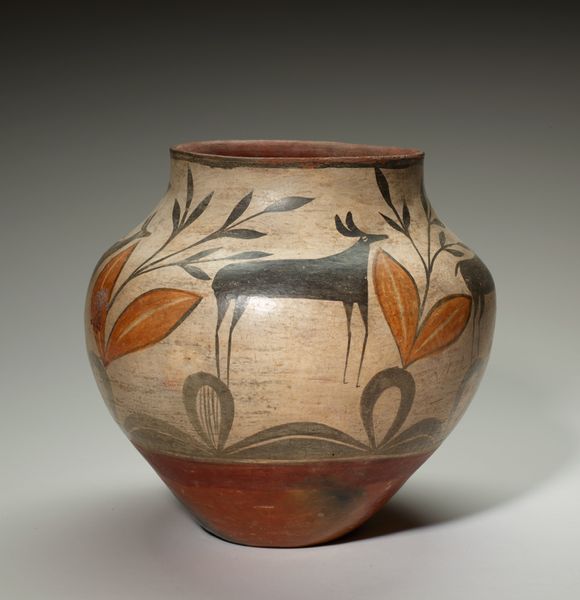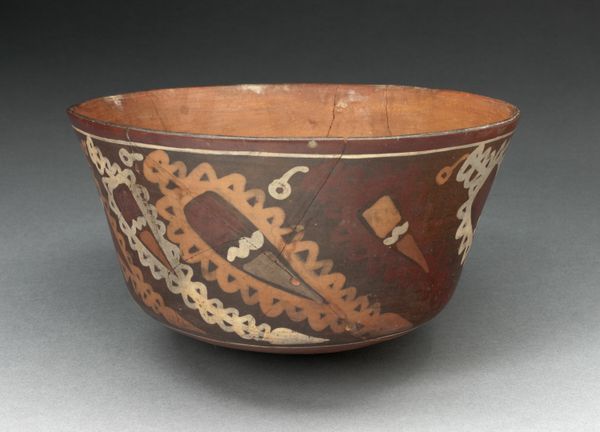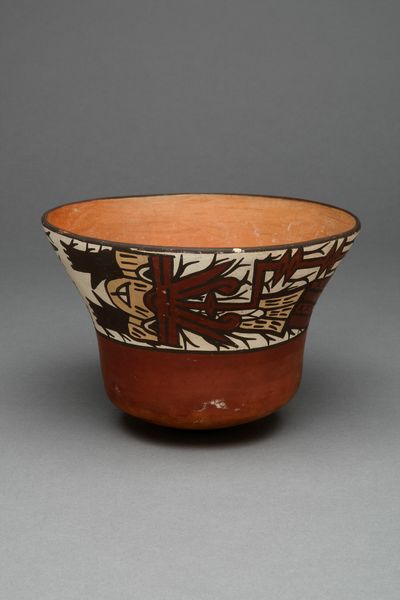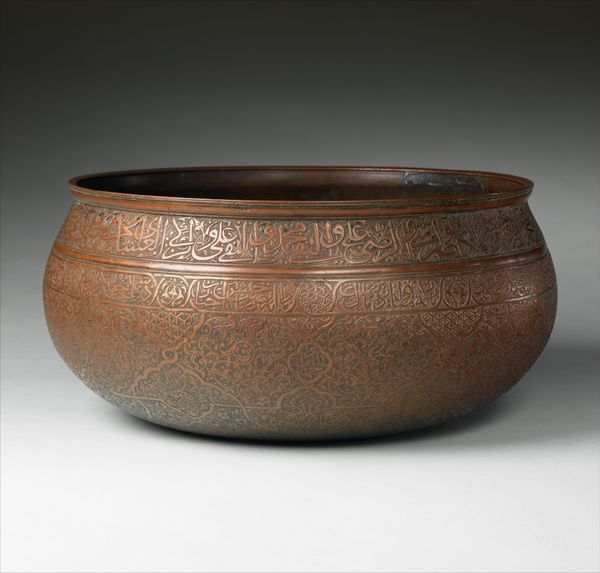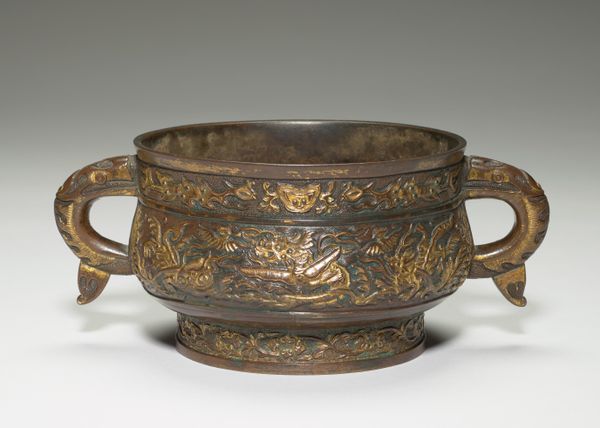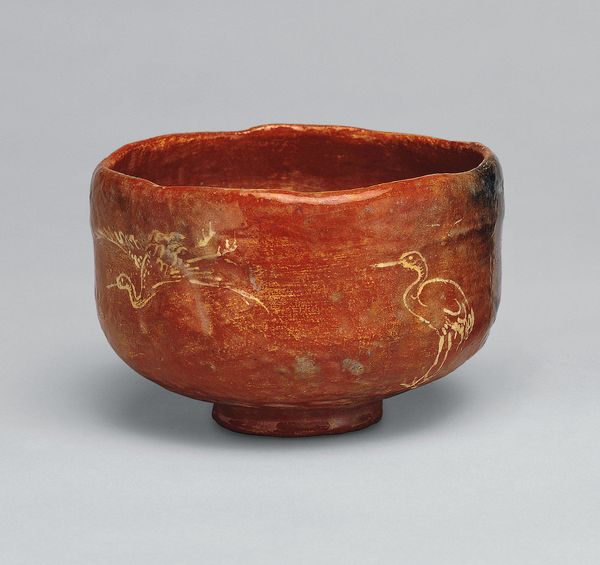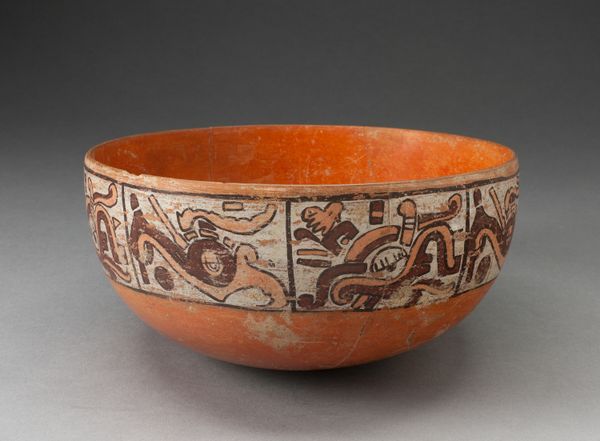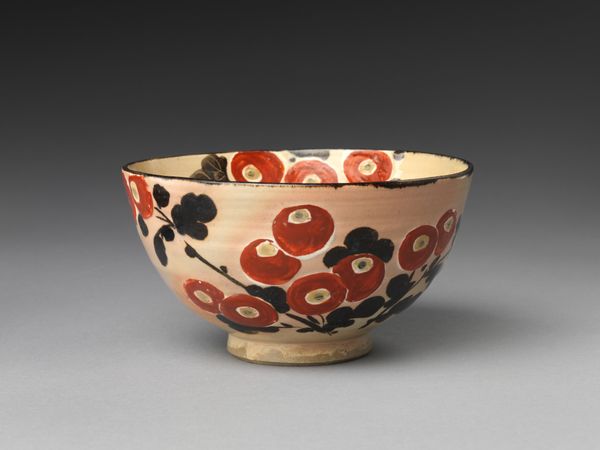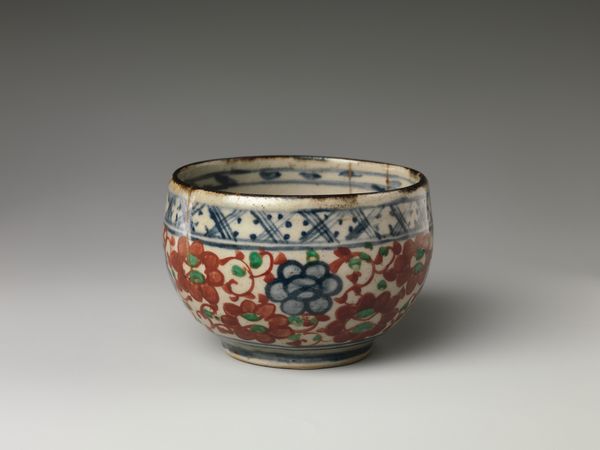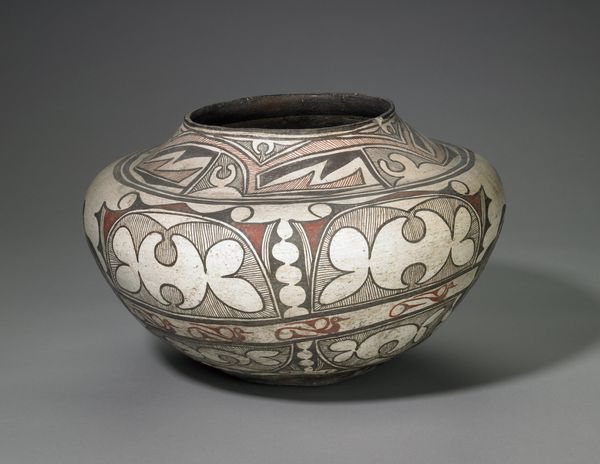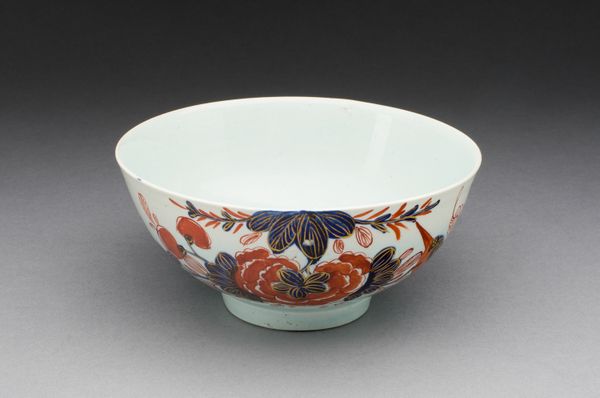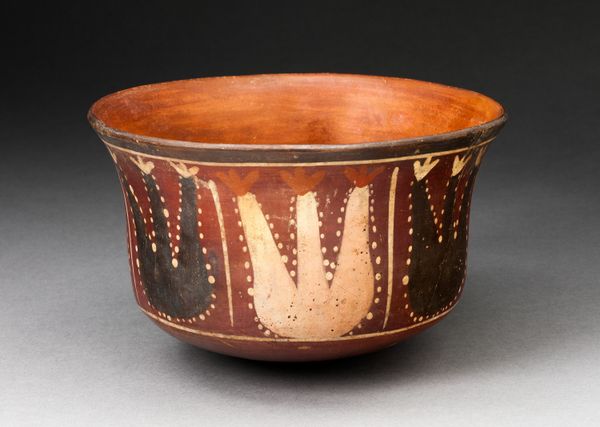
Noah driver dyrene ind i arken. Krukke med dekoration 1886
0:00
0:00
ceramic, earthenware
#
narrative-art
#
landscape
#
ceramic
#
figuration
#
earthenware
#
ceramic
Dimensions: 29.5 cm (height) x 39.5 cm (depth) (Netto)
Editor: This earthenware jar from 1886, "Noah Driving the Animals into the Ark," by Joakim Skovgaard, presents a rather literal depiction of the biblical story. I’m struck by how orderly the procession of animals appears, almost like a parade. What do you make of the narrative choice presented here? Curator: This piece offers an intriguing perspective. Skovgaard, in choosing this narrative, taps into deeply rooted social anxieties. Who gets saved? Who is deemed worthy? The story of Noah isn't just about faith; it's about power, control, and the violent erasure of a world deemed undesirable. Editor: That's a much darker interpretation than I initially considered! The figures appear calm, even docile. Are you suggesting that this calmness masks a more sinister undertone? Curator: Precisely. Think about the context: 1886. What power structures are at play? What social hierarchies are being reinforced, even subconsciously, through this seemingly benign biblical tale? Consider how landscape painting became prominent and the underlying nationalistic intentions often related to them. And who is missing in Skovgaard's Ark? What voices, perspectives, and creatures are excluded? The unrepresented or un-savable elements must be acknowledged. Editor: So, you see this work as not just a representation of a biblical story, but also as a commentary on social control and exclusion within the society of the late 19th century. The choice of animals itself sends a clear message of power structure. I find myself thinking about our world in relation to these animals now, it appears to convey so much about class, race, and perhaps gender as well. It adds a rich texture to the viewing of the ceramic artwork. Curator: Exactly, by exploring the historical, social, and political implications behind Skovgaard's work, we uncover powerful questions about identity, representation, and the stories we choose to tell, or leave out.
Comments
No comments
Be the first to comment and join the conversation on the ultimate creative platform.
